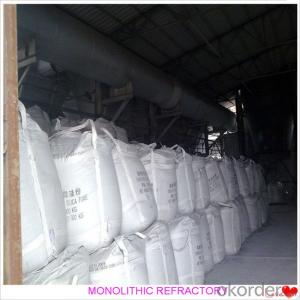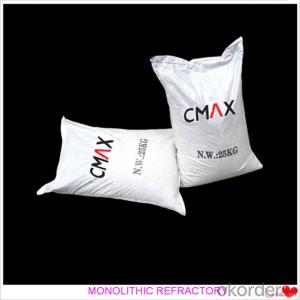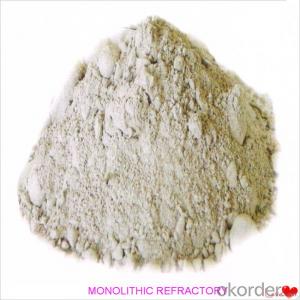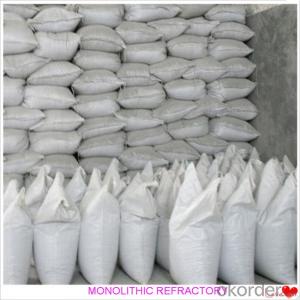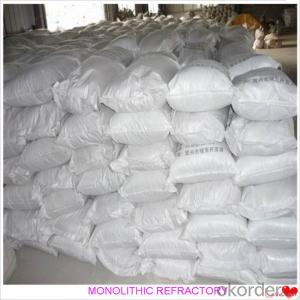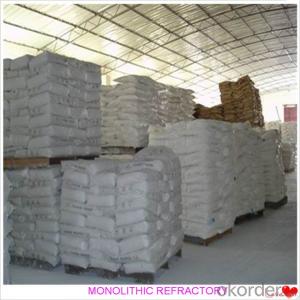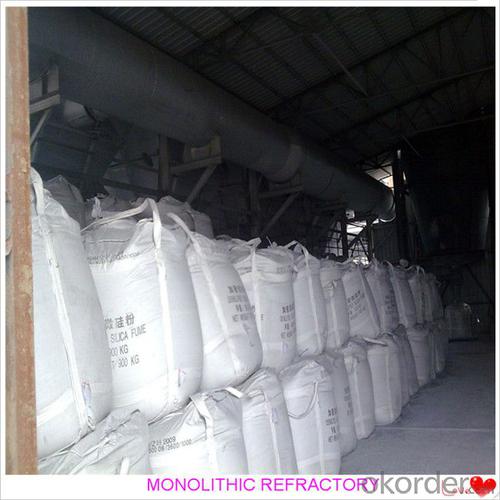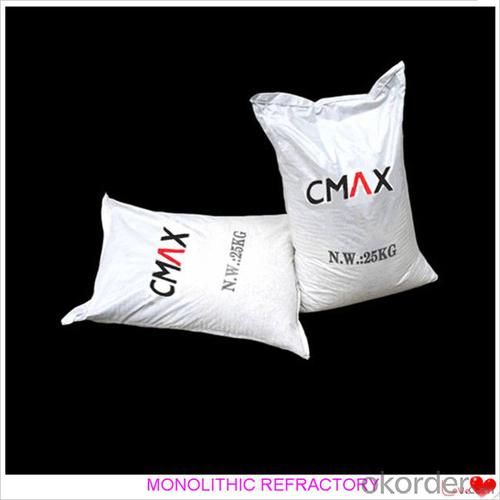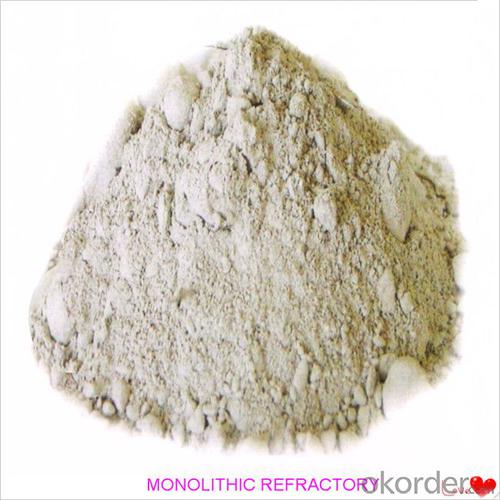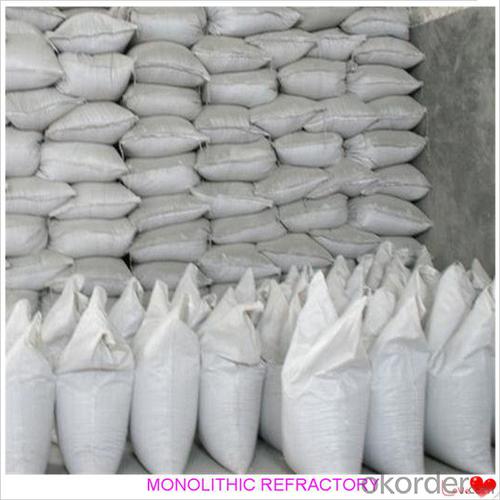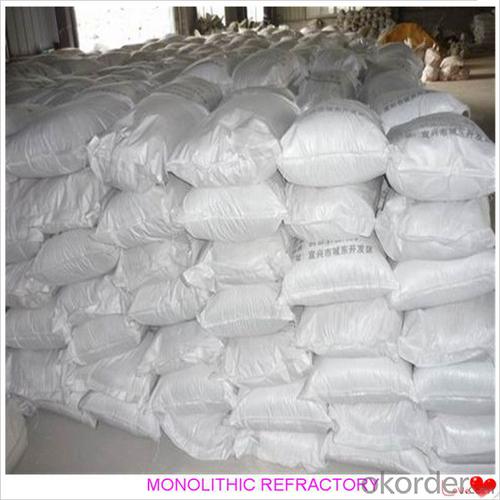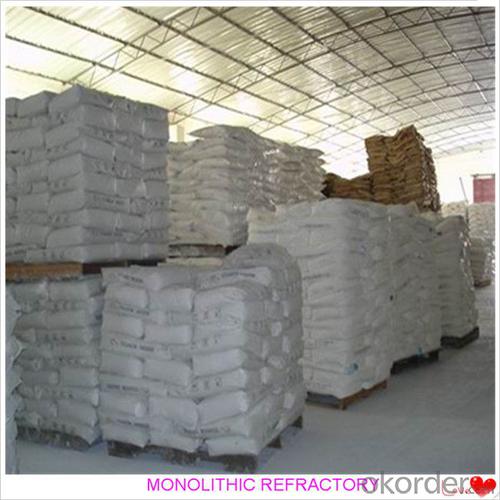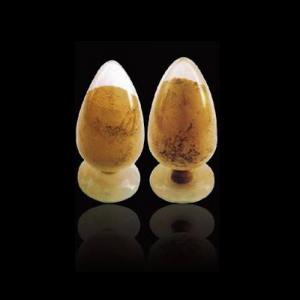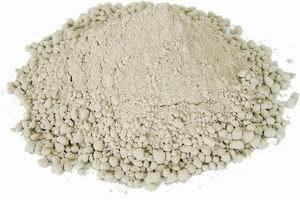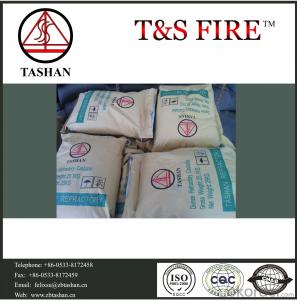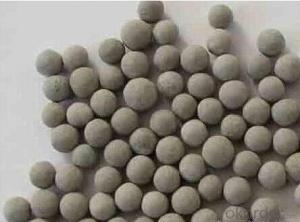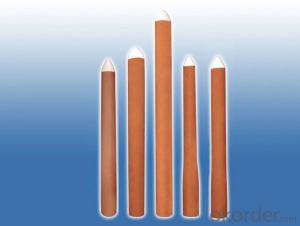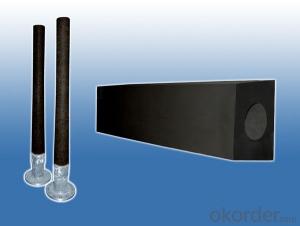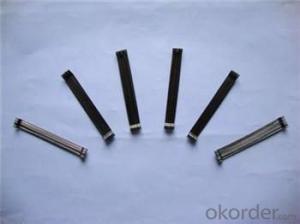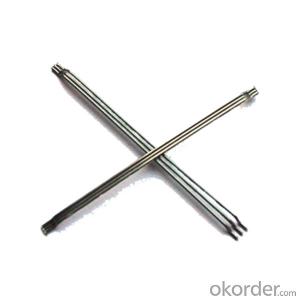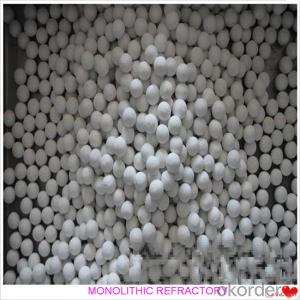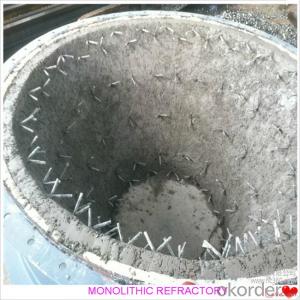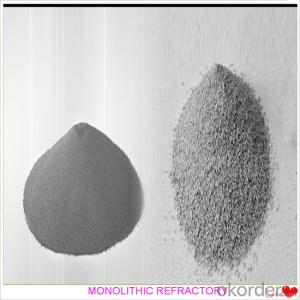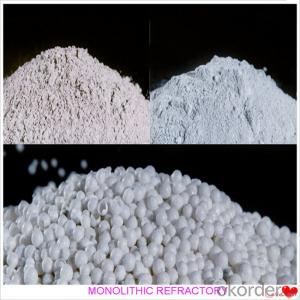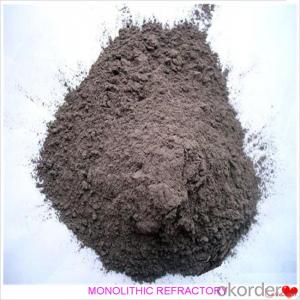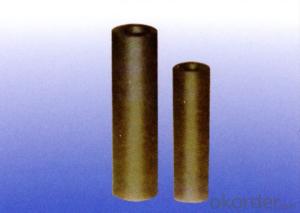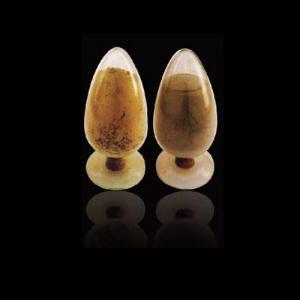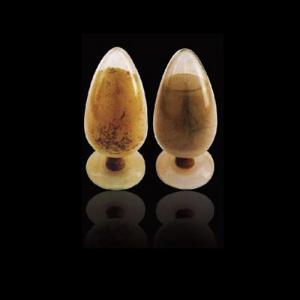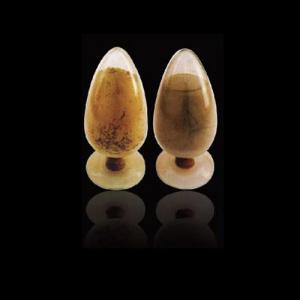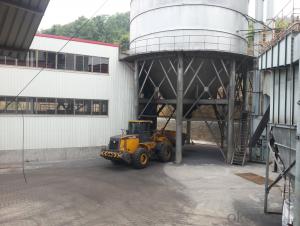Monolithic Refractories for Iron and Steel Industry:Low Weight Castable for Fireplace and Industrial Furnace
- Loading Port:
- China main port
- Payment Terms:
- TT OR LC
- Min Order Qty:
- 1000 kg
- Supply Capability:
- 3000000 kg/month
OKorder Service Pledge
OKorder Financial Service
You Might Also Like
Low Weight Castable For Fireplace and Industrial Furnace in Iron and Steel
Product Description:
Low weight castable is manufactured according to international standards. The product is famous for its excellent abrasion resistance and low thermal conductivity. Further, these can be provided in different specifications as required by the clients. The Low weight castables are used high purity raw materials and additives as the main material, and made of under superfine powder adding technology.
Product Advantages:
The material has excellent structural stability and air tightness, and has high physical and chemical properties, also has a fine working ability.They should be used with the same material products.
Product Applications:
For feature of Low weight castable, they have excellent abrasion resistance, thermal shock resistance, high-temperature resistance, anti-corrode and have high intensity.
Designed for refractory lining of blast furnace iron and slag runners, skimmers and soon
They can be used in troughs of small and mid size BFs and in all positions of the troughs where fast tapping is required.
Product Specifications:
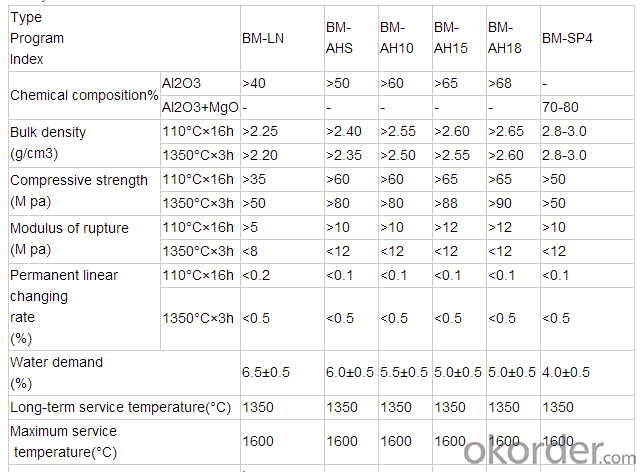
FAQ:
1. How you can control your quality?
For each production processing, we have complete QC system for the chemical composition
and Physical properties. After production, all the goods will be tested, and the quality certificate
will be shipped along with goods.
2. What's your delivery time?
It usually needs about 20days- 45 days after receiving the deposit.
3. Do you provide free samples?
Yes, we can provide a free sample for testing, If we have sample in stock,
The quantity based on the material type, The buyer should bear all the shipping costs.
4. What's your payment terms?
We can accept 30% deposit, 70% balance before shipment for ordrs over $ 2000.
5. Can we visit your Company?
Yes, certainly. You are very welcome to China and we will be honored to have a customer and friend.
Product Picture:
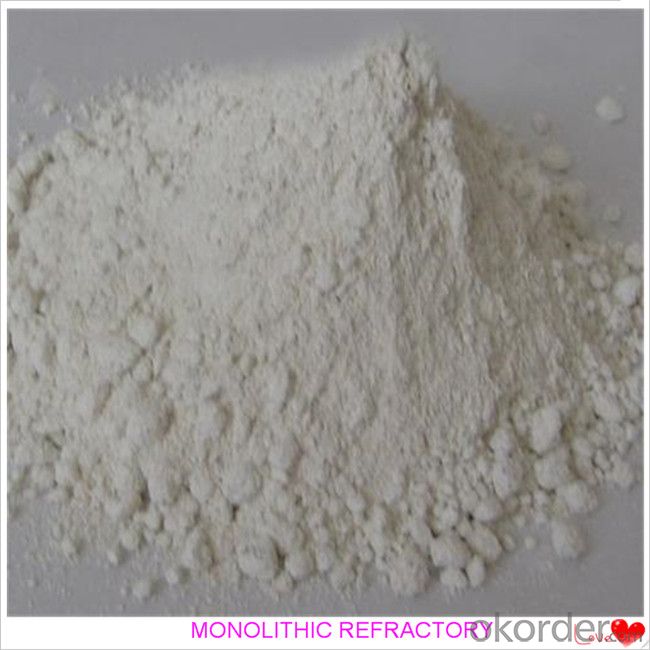
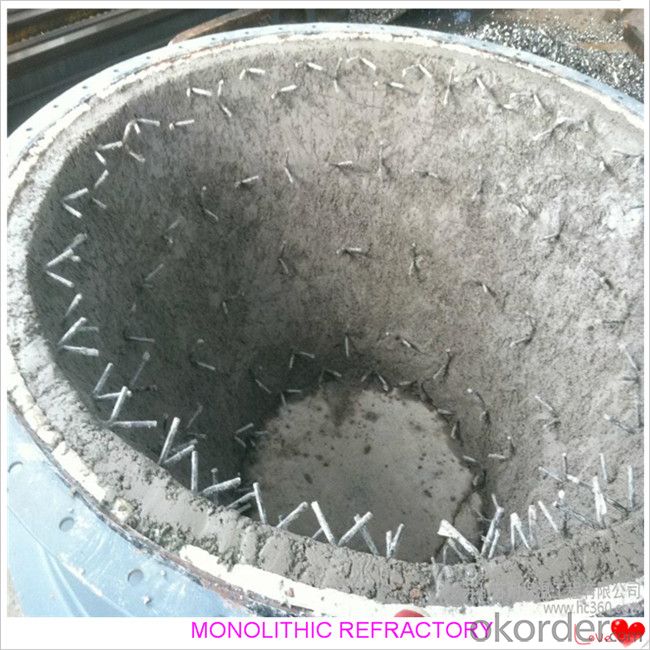
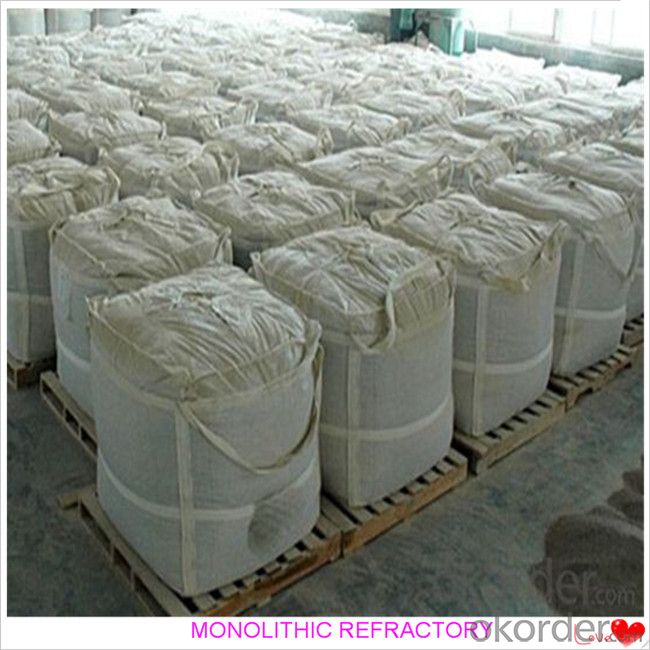
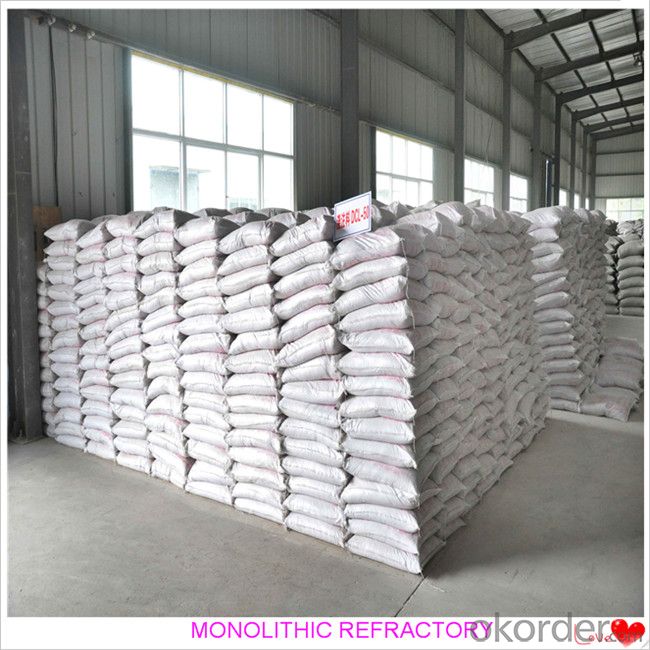
- Q: How do monolithic refractories contribute to the overall productivity of iron and steel plants?
- The overall productivity of iron and steel plants is greatly improved by monolithic refractories. These refractories are versatile and efficient because they can be shaped and installed without the need for joints or mortar. One significant way in which monolithic refractories boost the productivity of iron and steel plants is their ability to withstand high temperatures. They are designed to have excellent thermal shock resistance, meaning they can endure rapid temperature changes without cracking or breaking. This makes them suitable for use in blast furnaces, converters, and ladles, which require high temperatures. Using monolithic refractories in these critical areas allows iron and steel plants to operate at higher temperatures, resulting in increased production rates. These refractories provide effective insulation, reducing heat losses and improving energy efficiency. As a result, the plant saves costs and achieves higher output. Furthermore, monolithic refractories are well-known for their exceptional resistance to chemical attacks from molten metals and slags. They can withstand the corrosive effects of molten iron, steel, and other alloys, protecting the underlying structures and extending their lifespan. This reduces the need for maintenance and repairs, leading to less downtime and higher productivity. Additionally, monolithic refractories offer easy installation and maintenance, which further contributes to productivity. Unlike traditional refractories that require time-consuming bricklaying and jointing, monolithic refractories can be easily sprayed, troweled, or pumped into place, saving time and labor costs. Moreover, they can be repaired or replaced without major disruptions to the production processes, ensuring minimal downtime and maximizing overall plant productivity. In summary, monolithic refractories enhance the productivity of iron and steel plants in various ways, including their ability to withstand high temperatures, provide insulation and energy efficiency, resist chemical attacks, and offer easy installation and maintenance. Their ability to perform in extreme conditions and their cost-effectiveness make them crucial components in the iron and steel industry, ultimately contributing to increased output and profitability.
- Q: What are the challenges faced in the application of monolithic refractories?
- Some challenges faced in the application of monolithic refractories include proper material selection, achieving proper installation techniques, ensuring consistent and uniform application, controlling drying and curing processes, and dealing with potential shrinkage and cracking issues. Additionally, monolithic refractories often require skilled labor for installation and maintenance, and they may be susceptible to erosion, thermal shock, and chemical attack in certain environments.
- Q: How do monolithic refractories improve the efficiency of ladle and tundish preheating stations?
- Monolithic refractories play a crucial role in enhancing the efficiency of ladle and tundish preheating stations. These refractories are specifically designed to withstand high temperatures and thermal shocks, making them ideal for use in preheating applications. One key way in which monolithic refractories improve efficiency is by providing excellent heat insulation. These refractories have low thermal conductivity, meaning they minimize heat loss from the preheating station to the surroundings. As a result, more heat is retained within the ladle or tundish preheating station, leading to faster and more efficient heating of the vessel. Additionally, monolithic refractories offer superior heat retention properties. Once heated, these refractories have the ability to store and release heat gradually over time. This characteristic allows for a more consistent and controlled heating process in the ladle or tundish preheating station. By maintaining a stable temperature, the refractories ensure that the vessel is heated uniformly and prevent thermal shocks that could lead to cracking or other damage. Furthermore, monolithic refractories have excellent resistance to chemical reactions and erosion caused by molten metals and slag. Ladles and tundishes are often exposed to corrosive environments, and the use of monolithic refractories helps to protect against degradation and extend the lifespan of the preheating station. This durability reduces the need for frequent maintenance and replacement, leading to cost savings and improved overall efficiency. In summary, monolithic refractories improve the efficiency of ladle and tundish preheating stations by providing excellent heat insulation, heat retention, and resistance to chemical reactions. These properties result in faster and more uniform heating, reduced heat loss, and increased durability of the preheating station. Ultimately, these benefits contribute to improved productivity and cost-effectiveness in the steelmaking process.
- Q: How long is the lifespan of monolithic refractories in iron and steel applications?
- The lifespan of monolithic refractories in iron and steel applications can vary depending on several factors such as the specific type of refractory material used, the operating conditions, and the maintenance practices. However, on average, monolithic refractories in iron and steel applications can last anywhere from a few months to several years.
- Q: What are the considerations for repairing and patching monolithic refractories?
- Considerations for repairing and patching monolithic refractories include assessing the extent of the damage, identifying the cause of the damage, selecting the appropriate repair material, ensuring proper bonding and curing, and following manufacturer's instructions and recommended procedures. Additionally, factors such as temperature, chemical exposure, and mechanical stress should be taken into account to ensure the repaired refractory maintains its performance and longevity.
- Q: How do monolithic refractories mitigate heat loss in iron and steel operations?
- Monolithic refractories are highly effective in mitigating heat loss in iron and steel operations due to their unique properties and composition. These refractories are made from a single, continuous material, making them resistant to cracks and gaps that could allow heat to escape. One key advantage of monolithic refractories is their excellent thermal conductivity and insulation properties. They have a low thermal conductivity, which means they can effectively restrict the transfer of heat from the hot areas to the cooler surroundings. This insulation property helps maintain high temperatures within the iron and steel operations, reducing heat loss to the environment. Another factor that contributes to the heat loss mitigation is the ability of monolithic refractories to form a tight seal with the metal structures they are applied to. They adhere well to the surfaces and fill in any gaps or irregularities, creating a solid barrier against heat loss. This seal minimizes the possibility of heat escaping, ensuring that the energy generated within the operations is effectively utilized. Furthermore, monolithic refractories have high resistance to thermal shock. In the iron and steel industry, extreme temperature fluctuations are common, which can lead to material deterioration and cracks. Monolithic refractories, with their high thermal shock resistance, are able to withstand these rapid temperature changes without compromising their structural integrity. This ensures the longevity and effectiveness of the refractories in mitigating heat loss. Overall, monolithic refractories play a crucial role in mitigating heat loss in iron and steel operations by providing excellent insulation, forming a tight seal, and withstanding thermal shock. These properties allow the refractories to maintain high temperatures within the operations, optimize energy utilization, and enhance the overall efficiency of the processes.
- Q: What are the factors affecting the thermal conductivity of monolithic refractories?
- The thermal conductivity of monolithic refractories can be influenced by several factors. Firstly, the chemical composition of the refractory material plays a significant role in determining its thermal conductivity. The types and amounts of raw materials used can result in different thermal conductivities. For example, refractories with a higher content of insulating materials, such as alumina or silica, tend to have lower thermal conductivities. Secondly, the porosity of the refractory material also affects its thermal conductivity. Higher porosity means more air or gas-filled voids within the material, which act as thermal insulators. Therefore, refractories with higher porosity generally have lower thermal conductivities. Thirdly, the density of the refractory material is another important factor. Higher density materials usually have higher thermal conductivities as the particles are packed more closely together, allowing for better heat transfer. Moreover, the size of the grains in the refractory material can impact the thermal conductivity. Smaller grain sizes result in higher contact points between particles, facilitating better heat transfer. Therefore, refractories with smaller grain sizes typically have higher thermal conductivities. Additionally, the temperature at which the refractory material operates can affect its thermal conductivity. Some materials may exhibit changes in thermal conductivity at different temperature ranges. For instance, certain refractories may have lower thermal conductivities at low temperatures but higher conductivities at high temperatures due to changes in their crystal structure. Furthermore, the presence of moisture or water in the refractory material can significantly decrease its thermal conductivity. Water has a relatively low thermal conductivity, so even a small amount of moisture can act as an insulating barrier within the material. The microstructure of the refractory material, including the arrangement and orientation of its grains, can also affect thermal conductivity. A well-aligned microstructure with good interconnectivity between the grains can enhance heat transfer, resulting in higher thermal conductivity. In conclusion, the thermal conductivity of monolithic refractories is influenced by factors such as composition, porosity, density, grain size, temperature, moisture content, and microstructure. Understanding and controlling these factors is crucial for optimizing the thermal performance of monolithic refractories in various high-temperature applications.
- Q: How do monolithic refractories contribute to the overall reliability of iron and steel processes?
- Enhancing the overall reliability of iron and steel processes is a significant role played by monolithic refractories. These refractories are specifically designed to withstand extreme temperatures and harsh conditions commonly found in iron and steel manufacturing environments. Superior insulation is one key contribution of monolithic refractories. With their low thermal conductivity, they effectively reduce heat loss from the furnace or kiln. This insulation property allows for efficient energy usage and helps maintain stable operating conditions, resulting in consistent and reliable production. Furthermore, monolithic refractories offer excellent resistance to chemical attacks caused by molten metals, slag, and other corrosive substances. They can withstand the high alkalinity and high temperature of molten iron and steel, preventing any damage to the refractory lining. This resistance ensures the longevity of the refractory material, minimizing the need for frequent maintenance and replacement, thus contributing to the overall reliability of the iron and steel processes. Moreover, even at elevated temperatures, monolithic refractories exhibit good mechanical strength and stability. This strength enables them to withstand the mechanical stresses and strains exerted during the iron and steel manufacturing processes, such as thermal cycling, mechanical impact, and abrasion. By maintaining their structural integrity, monolithic refractories prevent the formation of cracks or spalling, which could lead to downtime or even catastrophic failure. This reliability ensures uninterrupted operations and reduces the risk of costly shutdowns. Additionally, monolithic refractories offer flexibility when it comes to installation and repair. They can be easily shaped and applied to various furnace shapes and sizes, allowing for efficient lining construction. Moreover, monolithic refractories can be repaired or patched quickly, minimizing downtime and maintaining the operational reliability of the iron and steel processes. To summarize, monolithic refractories contribute significantly to the overall reliability of iron and steel processes. They provide superior insulation, resistance to chemical attacks, mechanical strength, and flexibility in installation and repair. By ensuring consistent performance, durability, and reduced maintenance requirements, monolithic refractories play a crucial role in optimizing the efficiency and reliability of iron and steel manufacturing operations.
- Q: What are the main factors affecting the thermal conductivity of monolithic refractories?
- The main factors affecting the thermal conductivity of monolithic refractories are the composition of the refractory material, the density of the material, the porosity of the material, and the presence of any additives or impurities. The composition of the refractory material plays a significant role in determining its thermal conductivity. Different types of refractory materials, such as alumina-based, silica-based, or magnesia-based, have different thermal conductivities due to their varying chemical compositions. For example, materials with a higher alumina content generally have higher thermal conductivities compared to materials with a higher silica content. The density of the refractory material also affects its thermal conductivity. Generally, materials with higher densities have higher thermal conductivities because the closely packed particles allow for more efficient heat transfer. On the other hand, materials with lower densities have lower thermal conductivities as the heat transfer is hindered by the presence of air pockets or voids. The porosity of the refractory material is another important factor affecting its thermal conductivity. Porosity refers to the presence of small pores or spaces within the material. Higher porosity leads to lower thermal conductivity as the air or gas trapped within the pores acts as an insulator, reducing the ability of the material to conduct heat. Therefore, materials with lower porosity tend to have higher thermal conductivities. The presence of any additives or impurities in the refractory material can also affect its thermal conductivity. Certain additives or impurities, such as carbon or metallic oxides, can enhance or inhibit heat transfer in the material. For instance, the addition of carbon can increase thermal conductivity due to its high thermal conductivity, while the presence of metallic oxides may decrease thermal conductivity due to their lower thermal conductivities. In summary, the thermal conductivity of monolithic refractories is influenced by the composition, density, porosity, and the presence of any additives or impurities. Understanding and controlling these factors are crucial in designing and selecting refractory materials with optimal thermal conductivity for specific applications.
- Q: What are the considerations for selecting monolithic refractories for reheating furnaces?
- When selecting monolithic refractories for reheating furnaces, there are several important considerations to take into account. 1. Temperature requirements: Reheating furnaces operate at high temperatures, so it is crucial to choose monolithic refractories that can withstand the desired temperature range without experiencing significant thermal degradation or failure. The refractories must have a high refractoriness to maintain their structural integrity under these conditions. 2. Thermal shock resistance: Reheating furnaces often undergo rapid temperature changes due to the heating and cooling cycles. Monolithic refractories with good thermal shock resistance are essential to prevent cracking and spalling, which can lead to premature failure of the lining. 3. Mechanical strength: The monolithic refractories should have sufficient mechanical strength to withstand the stresses induced by the weight of the materials being heated and any mechanical movements within the furnace. This helps to prevent deformation or structural failure of the refractory lining. 4. Chemical compatibility: The refractories must be chemically compatible with the atmosphere and process gases present in the reheating furnace. They should resist chemical attacks from the gases or any corrosive substances generated during the reheating process. This ensures a longer service life for the refractory lining. 5. Abrasion resistance: Reheating furnaces often handle abrasive materials, such as hot billets or slabs. Selecting monolithic refractories with good abrasion resistance will help to minimize wear and extend the lifespan of the lining. 6. Ease of installation: Monolithic refractories offer advantages in terms of ease of installation compared to traditional brick refractories. However, it is important to consider the installation method and time required for the chosen monolithic refractory. Some monolithic refractories may require specialized equipment or techniques for installation. 7. Cost-effectiveness: While the initial cost of monolithic refractories may be higher than traditional brick refractories, their longer service life and ease of installation can result in overall cost savings. Assessing the cost-effectiveness of different monolithic refractory options is crucial for selecting the most suitable one for the reheating furnace. By considering these factors, one can make an informed decision when selecting monolithic refractories for reheating furnaces, ensuring optimal performance, durability, and cost-effectiveness.
Send your message to us
Monolithic Refractories for Iron and Steel Industry:Low Weight Castable for Fireplace and Industrial Furnace
- Loading Port:
- China main port
- Payment Terms:
- TT OR LC
- Min Order Qty:
- 1000 kg
- Supply Capability:
- 3000000 kg/month
OKorder Service Pledge
OKorder Financial Service
Similar products
Hot products
Hot Searches
Related keywords
